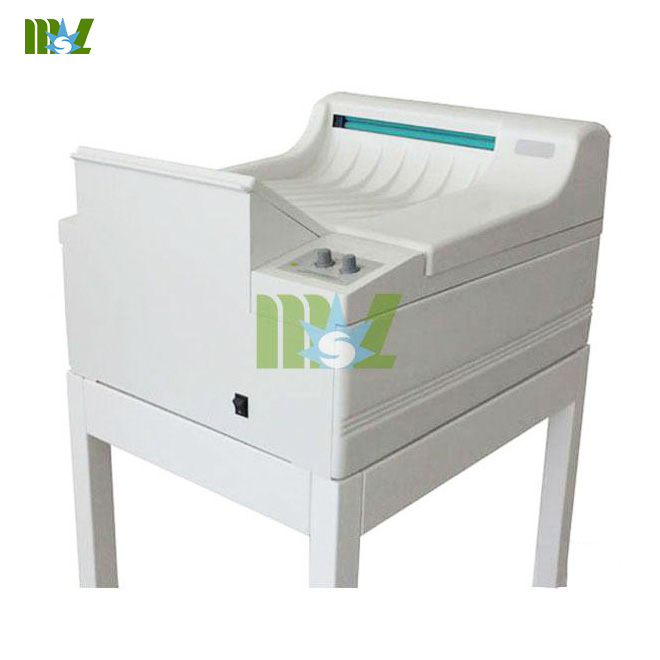This article begins with examples of successful bioceramics used clinically that improve the length and quality of life for patients. Developments of porous bioceramic and composite scaffolds for tissue engineering applications are then discussed. The article ends by discussing how bioactive ceramics may be the future of regenerative medicine due to their potential for guiding tissue regeneration by stimulating cells at the genetic level (Fig. 1).

NEARLY INERT BIOCERAMICS
High density, high purity a-alumina (Al2O3) was the first bioceramic widely used clinically, as the articulating surfaces of the ball and socket joints of total hip replacements because of its combination of low friction, high wear resistance, excellent corrosion resistance, good biocompatibility, and high strength (7). The physical properties of alumina depend on the grain size. Medical grade alumina exhibits an average grain size <4 data-blogger-escaped-4.5="" data-blogger-escaped-400="" data-blogger-escaped-a="" data-blogger-escaped-al2o3="" data-blogger-escaped-alumina.="" data-blogger-escaped-and="" data-blogger-escaped-applications="" data-blogger-escaped-are="" data-blogger-escaped-be="" data-blogger-escaped-bearing="" data-blogger-escaped-bioinert="" data-blogger-escaped-body="" data-blogger-escaped-bone="" data-blogger-escaped-br="" data-blogger-escaped-ceramic="" data-blogger-escaped-clinical="" data-blogger-escaped-compressive="" data-blogger-escaped-concerns="" data-blogger-escaped-dental="" data-blogger-escaped-ear="" data-blogger-escaped-flexural="" data-blogger-escaped-for="" data-blogger-escaped-fracture="" data-blogger-escaped-gpa="" data-blogger-escaped-has="" data-blogger-escaped-higher="" data-blogger-escaped-hip="" data-blogger-escaped-however="" data-blogger-escaped-implants.="" data-blogger-escaped-in="" data-blogger-escaped-include="" data-blogger-escaped-is="" data-blogger-escaped-jaw="" data-blogger-escaped-lower="" data-blogger-escaped-material="" data-blogger-escaped-maxillofacial="" data-blogger-escaped-may="" data-blogger-escaped-middle="" data-blogger-escaped-mm="" data-blogger-escaped-modulus="" data-blogger-escaped-of="" data-blogger-escaped-other="" data-blogger-escaped-over="" data-blogger-escaped-prostheses="" data-blogger-escaped-radioactivity="" data-blogger-escaped-rate="" data-blogger-escaped-reconstructions="" data-blogger-escaped-s="" data-blogger-escaped-screws="" data-blogger-escaped-strength="" data-blogger-escaped-substitutions="" data-blogger-escaped-suitable="" data-blogger-escaped-surfaces="" data-blogger-escaped-than="" data-blogger-escaped-that="" data-blogger-escaped-the="" data-blogger-escaped-there="" data-blogger-escaped-therefore="" data-blogger-escaped-total="" data-blogger-escaped-toughness="" data-blogger-escaped-wear="" data-blogger-escaped-young="" data-blogger-escaped-zirconia=""> When an almost inert implant is implanted into soft or hard tissue, a nonadherent fibrous capsule surrounds the implant. If the implant is loaded such that interfacial movement can occur, the fibrous capsule can become several hundred micrometers thick and cause loosening of the implant, which will eventually lead to clinical failure (8). An improved interface between nearly inert implants and tissue can be achieved by using an implant containing pores in excess of 100 mm in diameter. The fibrous connective (scar) tissue grows into these pores and anchors the implant in place. This technique is termed ‘‘biological fixation’’ (10). Viable bone requires pores of >200 mm. However, connective tissue still allows some movement of the prothesis, which will increase with age and cause bone resorption.
The article comes from:http://www.medicalequipment-msl.com/htm/medical-device-news/BIOCERAMICS-AS%20MEDICAL-DEVICES.html
No comments:
Post a Comment